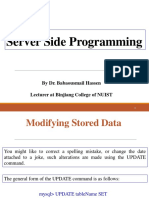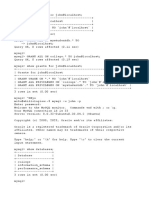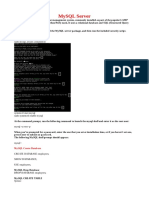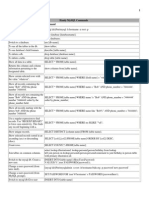0% found this document useful (0 votes)
11 views1 pageTutor Mysql Part 5 Gop
The document provides instructions on creating a user in a database and assigning permissions. It details how to create users with specific connection privileges and how to grant various levels of access to databases and tables. Additionally, it explains the implications of using the 'WITH GRANT OPTION' when assigning privileges.
Uploaded by
Irfan PordjoCopyright
© © All Rights Reserved
We take content rights seriously. If you suspect this is your content, claim it here.
Available Formats
Download as PDF, TXT or read online on Scribd
0% found this document useful (0 votes)
11 views1 pageTutor Mysql Part 5 Gop
The document provides instructions on creating a user in a database and assigning permissions. It details how to create users with specific connection privileges and how to grant various levels of access to databases and tables. Additionally, it explains the implications of using the 'WITH GRANT OPTION' when assigning privileges.
Uploaded by
Irfan PordjoCopyright
© © All Rights Reserved
We take content rights seriously. If you suspect this is your content, claim it here.
Available Formats
Download as PDF, TXT or read online on Scribd
/ 1

























































